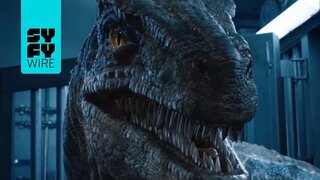We're Celebrating the Dinosaur Bicentennial in 2024
Happy 200th birthday to Megalosaurus and the kingdom of dinosaurs!
It is a truth universally acknowledged, that a kid in possession of curiosity and wonder, must be in want of some dope dinosaurs. It’s the reason The Land Before Time and Jurassic Park hold so much cultural currency. Little else could trick a child into learning Latin and liking it, yet toddlers everywhere happily bandy about on unsteady legs spitting facts about stegosaurs and velociraptors. But it wasn’t always so.
RELATED: When You Die May Have Been Partially Determined by Dinosaurs
Galileo knew that there were other worlds in the solar system, great gas giants with many moons and immense ring systems; Newton knew about the motions of the heavens and the influence of gravity; and Dalton knew that matter was made of discrete building blocks called atoms; but none of them had ever heard of Tyrannosaurus rex. As timeless as dinosaurs might feel to us today, they entered our collective consciousness relatively recently. In fact, 2024 marks the 200-year anniversary of the Megalosaurus, the first dinosaur.
War Elephants and Giant Humans Were Early Explanations for Dinosaur Fossils
To be clear, it’s likely that dinosaur fossils have been found throughout history by various peoples. It is even suspected that their bones might have been the inspiration for long-standing mythological creatures like dragons. However, the first documented description of a dinosaur traces its history back to 1676, when the lower part of a huge femur was found in the Taynton Limestone Foundation in Oxfordshire.
A description of the bone was published by Robert Plot, then Professor of Chemistry at Oxford. Plot originally supposed that the bone might have come from a Roman war elephant, though he later imagined it came from a giant human being. That first dinosaur fossil was given the incorrect and hilarious name Scrotum humanum, noting its apparent origin in a giant human and its obvious similarity in appearance to the human male reproductive anatomy. It sounds silly now, but at the time no one had yet dreamt up evolution or extinction.
William Buckland Discovers Megalosaurus, the First Dinosaur
It took another 148 years to figure out what that massive bone really was. In 1824, William Buckland, Oxford’s first Professor of Geology, described another specimen of what is believed to be the same sort of creature (it’s unclear because Plot’s original specimen was lost) in an article titled Notice on the Megalosaurus or Great Fossil Lizard of Stonesfield. While Plot only had part of a femur, Buckland based his description on a lower jaw, limb bones, and a few vertebrae. Like Plot before him, Buckland didn’t get everything right. His original description imagined Megalosaurus as a possibly amphibious quadrupedal animal, instead of the bipedal theropod we know it is today. Despite his understandable mistakes, Megalosaurus maintains its spot as the first fossil known to be a prehistoric lizard-like animal.
Even with Buckland’s discovery in the science history books, it took some time for the idea of dinosaurs to take root. By the 1830s, we had a small but growing number of prehistoric reptile-like animals being pulled out of the ground. The discovery and descriptions of Iguanodon and Hylaeosaurus, and their morphological similarities to Megalosaurus and to one another, caught the attention of comparative anatomist Richard Owen.
RELATED: Discovery of Freshwater Plesiosaurs Makes Loch Ness Monster ‘Plausible’
Finding common characteristics among all three fossil animals, including fused vertebrae in adults, Owen grouped the animals together into a new group which he dubbed Dinosauria, meaning “terrible lizard.” However, the dinosaurs were in danger of a second extinction as the notion that they were an actual, scientifically valid, animal group fell out of favor. By the end of the 19th Century, more specimens were being unearthed and paleontologists began finding a wider diversity of forms. Some were quadrupedal and others bipedal, some had lizard-like hips and others had bird-like hips. The apparent distinction among the recently discovered “terrible lizards” was enough to cause some scientists to suggest the group didn’t actually exist.
It took most of a century, until the 1970s and the realization that modern birds are in fact living dinosaurs, for visions of sauropods and tyrannosaurs to filter back into the public consciousness. Fortunately, it happened just in time for the Spielbergs and Crichtons of the world to grow up in the modern age of dinosaurs.
Celebrate the dinosaur bicentennial with Jurassic World Dominion, streaming now on Peacock.
















































